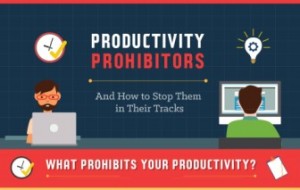Many organizations have decided to ditch the once-a-year annual appraisals, and implement quarterly check-ins and continuous feedback. This is largely due to a switch in the generational workforce. Millennials and Gen Z now constitute almost 50% of the workforce. While all employees want feedback, younger generations want it the most. They want recognition for jobs well done, corrective feedback on what they need to improve, and transparency into their career paths. But continuous feedback isn’t enough to develop and motivate these workers.
1) Feedback has to be constructive
Feedback has to be constructive. Said another way, ‘great job’ and ‘kudos’ does not develop or motivate employees. The feedback has to be action-based, effort-based, and forward-looking to truly change the behaviours and actions of employees. Better feedback will ultimately lead to better performance.
2) There should be multiple feedback sources
More and more employees are working in multiple roles, across different teams, with several managers throughout the year. In some organizations, employees may not even work with their direct managers for months on end. Feedback from a direct manager that rarely interacts with an employee will be error-prone and plagued with biases. However, if an employee receives feedback for multiple different sources, including their team leads and peers (aka 360 feedback), a more accurate picture of an employee’s performance will be captured. This subsequently leads to more strategic training and talent decisions.
360 feedback has gained popularity over the years. More than 85% of Fortune 500 companies use 360- degree feedback as a cornerstone of their overall leadership development. A 360 feedback software can help capture and store this feedback data. Moreover, many 360 feedback softwares also have people analytics that can help organizations make better talent and training decisions. Each software has its own angle and quirks – make sure it fits with your company culture will be important if it is to get widespread employee adoption.
3) Make feedback real-time
In order to create a culture of feedback, some organizations will have a weekly or bi-weekly reminder. This is a great start to help create and sustain a culture of feedback, but to make feedback more impactful, feedback should also be done in real-time. Consider this: would receiving feedback two weeks after you have completed a presentation be more or less impactful than receiving feedback right after a presentation? The sooner feedback is given, the sooner the right behaviors can be enforced, supported, or corrected.
Conclusion
Enabling continuous feedback is a great start, but organizations can do better. Organizations need to make sure feedback is constructive, involves multiple different perspectives and is in real-time to better develop and motivate employees.
Business & Finance Articles on Business 2 Community
(35)
Report Post








